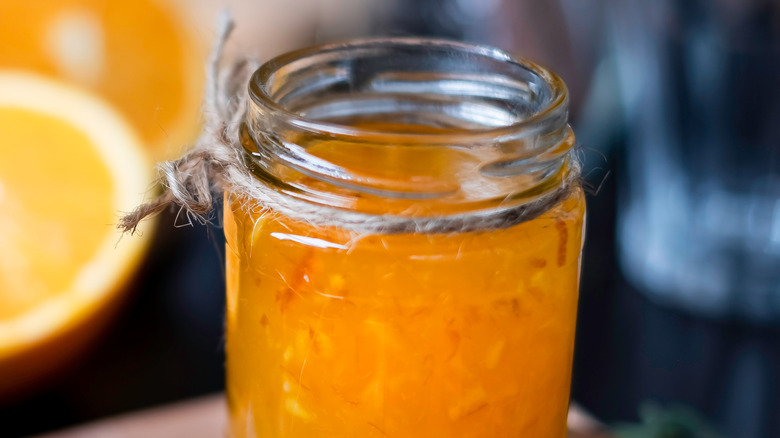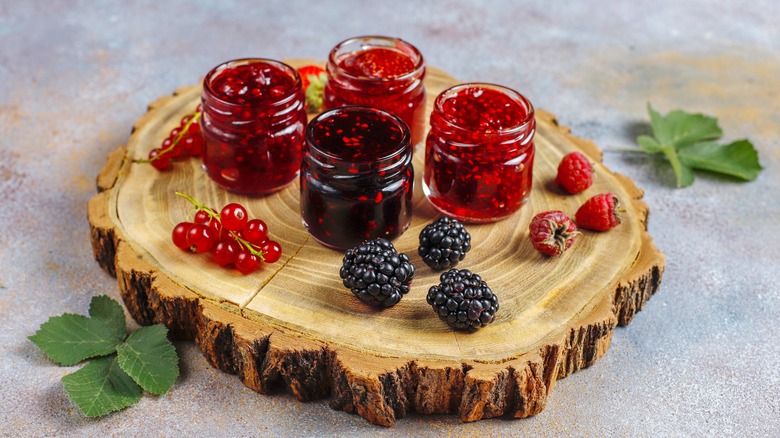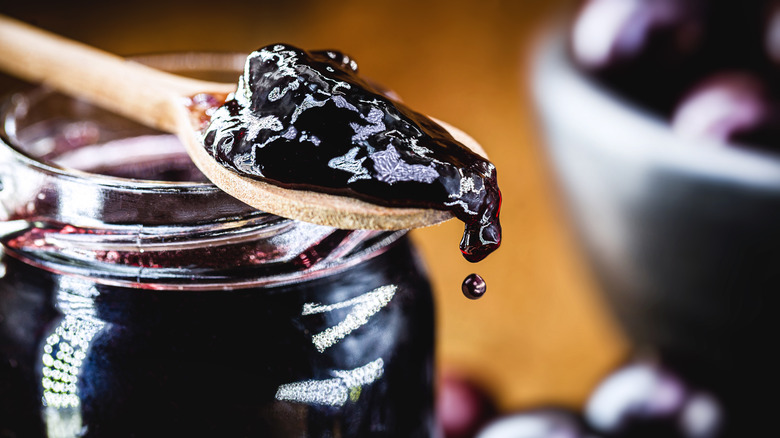Marmalade Vs. Jam: What's The Difference?
If you grew up eating marmalade but not jam or jam but not marmalade, you might wonder how they're different. Both have that gelatinous, spreadable texture and both make a plain slice of toast a scrumptious breakfast treat.
Beyond that, though, what's the difference? It turns out that jam and marmalade may look similar, but they also have some significant differences in one of the key things that make fruit spreads what they are. This fundamental difference isn't the only one, though — it turns out that jam has a slightly different texture from marmalade, and they may have slight differences in the nutrients that they provide. There are also some subtle differences in the appearance of each that will point you to exactly what you're scooping out of the jar. Marmalade and jam are still pretty similar, but don't confuse the two — you'll end up with a completely different flavor and texture added to your breakfast.
The differences between marmalade and jam
Although you might think that marmalade and jam are pretty much the same thing — especially because they're both used in baking — that similar texture isn't everything. Marmalade and jam have plenty of differences , too, but it takes a careful eye to spot them.
The biggest things that separate marmalade from jam are the types of fruit used to make it, the parts of the fruit used, and the nutrition differences between the two. Making jam involves chopping or crushing up whole fruit and heating it up with water and sugar. Although you may often see grape, strawberry, apricot, and raspberry jams lining the shelves at your grocery store, you might notice that they don't usually come in citrus flavors. This is where marmalade comes in. It's a citrus-based spread, and instead of using whole fruit, it contains both the citrus juice and the fruit peel. It's also cooked with sugar and water, but it's slightly more translucent, and it's also often thicker than jam. Although both marmalade and jam are a bit healthier than jelly is, either could give you a sugar high — they're extremely high in sugar. However, thanks to their fruit, they both have plenty of nutrients.
The difference between marmalade and jelly
Marmalade and jam are undeniably different, but what's the difference between marmalade and jelly? Jam and jelly are easy to confuse with each other, but they aren't the same thing, and marmalade isn't a jelly either.
The key difference between marmalade and jelly lies in how the fruit is used in each. Marmalade contains whole citrus fruit chopped up to make it spreadable. By contrast, jelly contains fruit juice, not fruit pieces like jam or marmalade has. Jelly also has the additive pectin for texture. After all, it would be hard to get that signature texture without pieces of fruit or a setting agent to "gel" it. The fruit juice in jelly usually makes it more tightly packed together than marmalade is. Jelly is also not as healthy to eat as marmalade is because it uses fruit juice instead of fruit, which makes it contain less fiber. Jam and marmalade have some distinct differences, but both are different from jelly, so pay attention the next time you shop for breakfast spreads.


